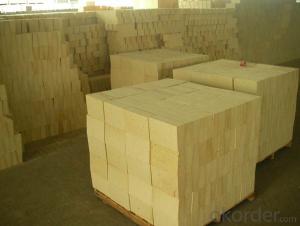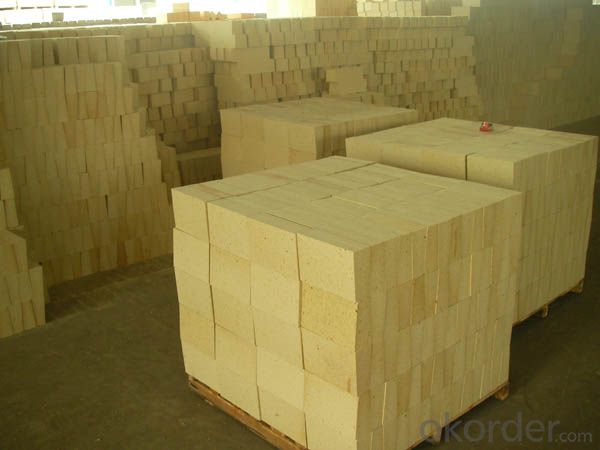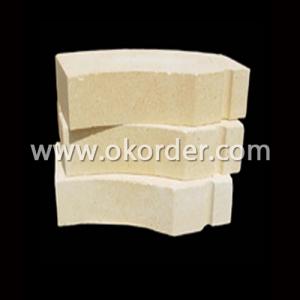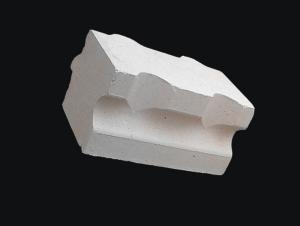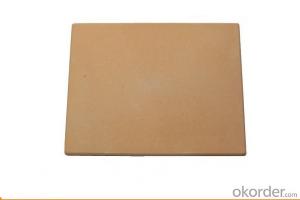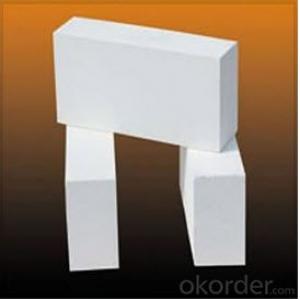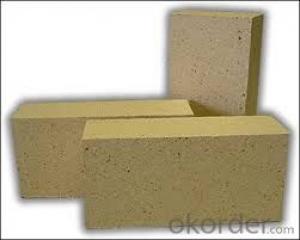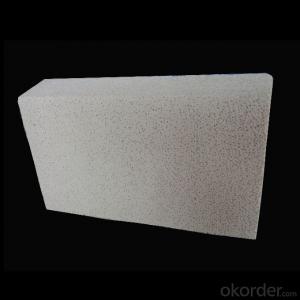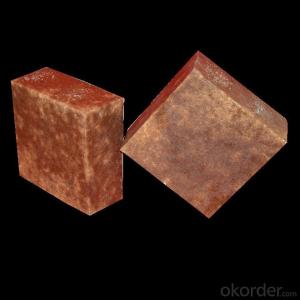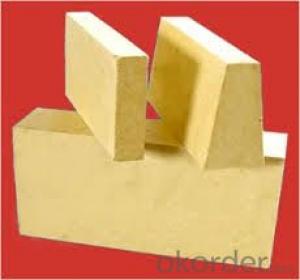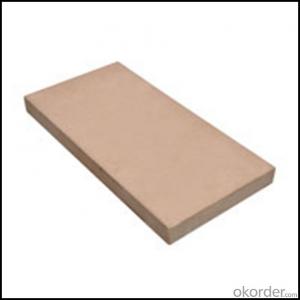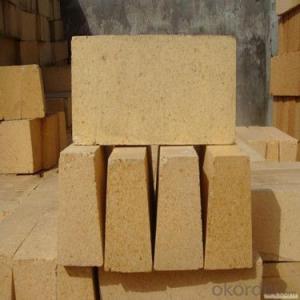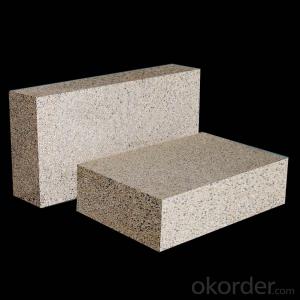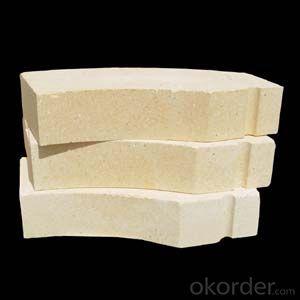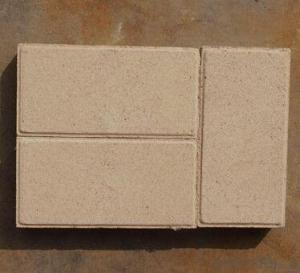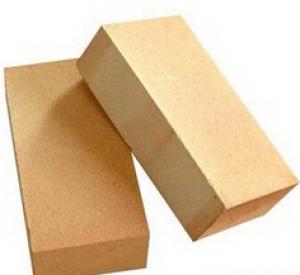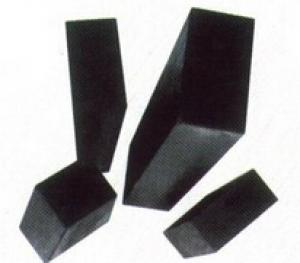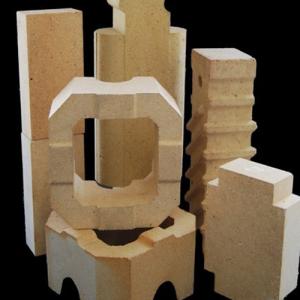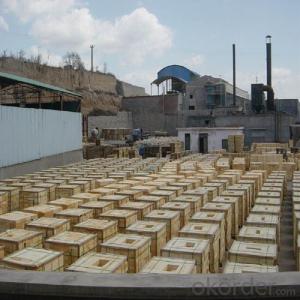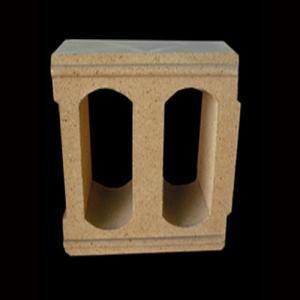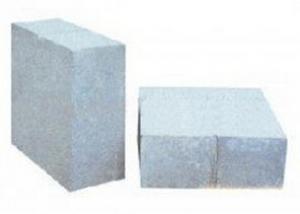High Alumina Refractory Bricks / Fireclay Bricks / Insulation Bricks (LQFB)
- Loading Port:
- Shanghai
- Payment Terms:
- TT OR LC
- Min Order Qty:
- 1 m.t.
- Supply Capability:
- 111 m.t./month
OKorder Service Pledge
OKorder Financial Service
You Might Also Like
Specifications
Refractory Brick
1-Made from high quality alumina
2-Low thermal conductivity
3-SK series,custom made
4-.ISO9001 certificated
Fire/firecaly brick
Refractory brick is dense shaped refractory material. With high refractoriness and mechanical behavior under high temperature, refractory brick is the necessary material of high-temperature services, mainly used for industrial furnaces and kilns and thermal equipment.
Refractory brick has wide applications, mainly used in metallurgy, construction(cement and glass), petroleum, chemical industry, electric power and machine building.
Linquan series alumina bricks are high quality dry pressed alumina bricks, ranging from 35% to 95% in alumina content.
Fire clay bricks
Chemical and Physical Properties | LQHAB70 | LQHAB 60 | LQHAB 50 | LQHAB 80 | |
Chemical | Al2O3; ≥ | 70 | 60 | 50 | 80 |
Fe2O3; ≤ | 2.0 | 2.0 | 2.0 | 2.0 | |
Refractoriness (SK); ≥ | 38 | 37 | 36 | 39 | |
Bulk Density; ≥ | 2.30 | 2.20 | 2.10 | 2.40 | |
Apparent Porosity (%); ≤ | 23 | 23 | 23 | 23 | |
Cold Crushing Strength | 400 | 400 | 300 | 400 | |
(Kg/cm2); ≥ | |||||
Thermal Expansion (%) | 0.65 | 0.60 | 0.53 | 800 0.65 | |
at 1000°C | |||||
Permanent Linear Change (%) | 0.3 | 0.3 | 0.3 | 0.2 | |
at 1500°C × 2Hrs | |||||
Refractoriness under Load | 1580 | 1500 | 1470 | 1670 | |
High aluminum bricks
Chemical and Physical Properties | LQH-90 | LQH 85 | LQH-80 | |
Chemical | Al2O3; ≥ | 90 | 85 | 80 |
Fe2O3; ≤ | 1.0 | 1.0 | 1.0 | |
Refractoriness (SK); ≥ | 40 | 40 | 39 | |
Bulk Density; ≥ | 3.10 | 2.90 | 2.80 | |
Apparent Porosity (%);≤ | 18 | 20 | 20 | |
Cold Crushing Strength | 700 | 600 | 600 | |
(Kg/cm2); ≥ | ||||
Thermal Expansion (%) | 0.70 | 0.68 | 0.65 | |
at 1000°C | ||||
Permanent Linear Change (%) | 0 | 0 | 0.2 | |
at 1500°C × 2Hrs | ||||
Refractoriness under Load | 1,700 | 1,700 | 1,670 | |
- Q: What are the reasons for the spalling of refractory bricks in the production of lime kiln?
- In the course of the production of lime kiln, the local block of refractory brick is a very dangerous signal. It is suggested that you stop the kiln to prevent the collapse of a large area. Lime kiln is the main equipment for the production of limestone kiln and rotary kiln is two, with the growth of calcium carbide lime kiln industry, iron and steel industry, the construction industry to the amount of limestone has become the main production equipment, and refractory bricks became the heart of lime kiln.
- Q: What are the grades of high alumina bricks?
- High alumina brick according to the aluminum content is generally divided into: super high alumina brick, a high aluminum brick, two high alumina brick, three high alumina brick
- Q: What is the price of the latest thermal insulation material?
- Also through online pre understand the products and prices, and now have large-scale manufacturers are generally opened on the cable business. Goods than three, manufacturers on-site inspection, confirm the quality of goods after considering cooperation.
- Q: What kinds of minerals are there in the five major categories of ore crystal chemistry?
- Sulphide. A total of more than 200~300 kinds, followed by the type of silicate minerals, the weight of 0.25% of the crust. Chang Fu is an important nonferrous metal deposit, which is an important source of copper, lead, zinc, antimony and so on. It is of great economic value. The main features are: metal luster, color, streak is deep, low hardness, good thermal conductivity, than the major. Another feature is that because sulfides are often associated with magma, it is very easy to oxidize under the surface supergene action. Except for pyrite (6 ~ 6.5 hardness), the hardness is very low. Such minerals pyrite, chalcopyrite, galena, FeS2 CuFeS2, PbS, Sb2S3, stibnite sphalerite molybdenite, cinnabar HgS MoS2.
- Q: Corundum, high alumina and fireclay refractory difference is what
- In fact, they are not consistent with raw materials, corundum refractories can use white corundum, white corundum, brown corundum corundum material, alumina content of these materials is higher than 90%, while the high aluminum refractory material is bauxite, alumina in 90 to less than 70, and clay raw materials the aluminum content is less than 70..
- Q: What are the high temperature refractory mortars made of?
- Siliceous mud, mineral composition and chemical composition is similar with silica, excellent corrosion resistance, water glass slurry, drying shrinkage, but also can be used for bonding fiber products, sealing furnace wall.
- Q: What are the specifications for bricks?
- Ordinary brick size of 240 mm * 115 mm * 53 mm, according to compressive strength (Newton / square millimeter, N / mm2) size is divided into MU30, MU25, MU20, MU15, MU10, MU7.5, these intensity levels. Clay brick materials, cheap, durable, and fire prevention, heat insulation, sound insulation, moisture absorption and other advantages, is widely used in civil engineering. Waste brick can also be used as aggregate of concrete. In order to improve the shortcomings of ordinary clay bricks, such as small, self important and waste of soil, they are developing in the direction of light weight, high strength, hollow and big blocks.
- Q: What are ordinary bricks, refractory bricks, hollow bricks?
- Referred to as refractory brick. Refractory wood made from refractory clay or other refractory material
- Q: What are the lining structures of lime rotary kilns and what are the requirements for refractories?
- The rotary kiln lining structure of rotary kiln and requirements on refractories calcining active lime according to the general output is divided into Nissan 300t, 400 t, 600 t, 800 t, 1000 t, 12000 t of kiln type, calcining zone temperature at 1350 degrees celsius. The kiln is divided into a discharge end, a cooling zone, a burning zone, a preheating zone and a feeding end, and the temperature of each section of the kiln ranges from 1000 DEG C to 1350 DEG C, and the requirements for refractory materials are different. The kiln refractory materials not only to withstand the high temperature impact, but also need to bear the material erosion, kiln rotation stress produced, so not only on the physico-chemical properties of refractory materials have strict requirements, but also for the construction of brick should be strictly.
- Q: How can the refractory brick blast furnace be pulverized and pulverized enough not to be taken away by the wind?
- Because the hot air outlet of the top burning hot blast furnace is high, the installation requirement of the hot air manifold is high, and the requirement of the strength of the pillar structure is higher, so the rectangular arrangement of the hot blast stove is arranged. The top burning hot blast stove is located on the furnace top because of burner and hot air valve,Therefore, operation, maintenance and installation all require mechanization and automation. Also, because these water cooled valves are mounted with a high elevation,Therefore, the demand for cooling water supply pressure should be improved accordingly, the use of large top burning hot blast stove, the key lies in the design of high-power high-efficiency short flame burner. The top combustion hot blast furnace absorbs the advantages of internal combustion and external combustion hot blast stoves, and overcomes some of their shortcomings,Its structure can meet the requirements of modern blast furnace for high temperature, high pressure and large scale development,Combustion capacity, while meeting production requirements, has been successfully reduced by many devices,
Send your message to us
High Alumina Refractory Bricks / Fireclay Bricks / Insulation Bricks (LQFB)
- Loading Port:
- Shanghai
- Payment Terms:
- TT OR LC
- Min Order Qty:
- 1 m.t.
- Supply Capability:
- 111 m.t./month
OKorder Service Pledge
OKorder Financial Service
Similar products
Hot products
Hot Searches
Related keywords
